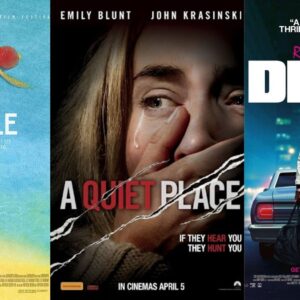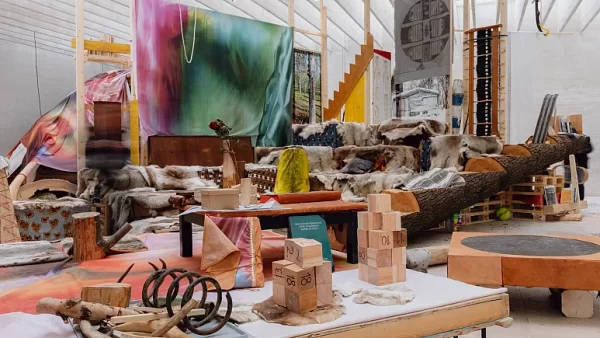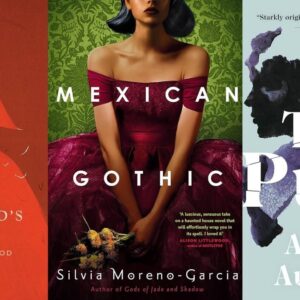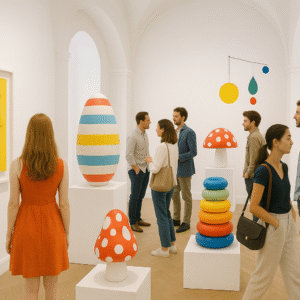The Architecture Biennale in Venice is happening this year. It is wacky, thought-provoking, and inspiring. Lesley Lokko, the curator, is of Scottish-Ghanaian origins. She has focused on Africa, with over half of the participants from the continent or its diaspora.
The installations and exhibitions at the Biennale discuss climate change, colonialism, and indigenous culture.
Visiting the Biennale can be overwhelming due to the vast amount of extraordinary culture on display. There are 27 pavilions in the Giardini, 22 in the Arsenale, and 14 scattered throughout Venice.
We have created a guide to help you navigate the 18th edition of this international festival. It highlights the must-see exhibitions and pavilions.
Finland declares death to the flushing toilet
Finland starts its contribution to the Biennale just outside the pavilion designed by Alvar Aalto. A conceptual sculpture resembling Duchamp’s style catches the eye.
A broken ceramic toilet bowl is half-buried in a rectangular pit. It represents an archaeological excavation, symbolizing the relegation of the flushing toilet to history. The project is led by the Dry Collective group.
Inside the pavilion, an exhibition showcases a future sanitation solution from Finland. At the center, a wooden structure houses a composting toilet called “huussi,” widely used by rural Finns.
Curator Arja Renell expresses, “We cannot tolerate a planet where billions of people deplete precious freshwater resources to flush their waste.” She invites professionals to seek alternative solutions through the inspiration of huussi, which better serves our world today.

Nordic Pavilion honours Indigenous architecture
The Pavilion of Nordic Countries is filled with light and has a mix of reindeer skin tents, seating made from carved logs, and wooden huts.
Joar Nango, an artist and architect, created the installation and gathered a collection of books on Indigenous architecture over 15 years.
Girjegumpi, the Sámi Architecture Library, is a social space that has been to various places in the Nordic region.
Visitors are welcome to use the pavilion as a reading room to explore subjects like Sámi architecture, design, traditional building techniques, activism, and decolonization.
Uzbek Pavilion leads visitors into a labyrinth
Visitors enter Uzbekistan’s pavilion in the Arsenale by pushing a black curtain aside. Inside, they find themselves in a dimly lit space facing a brick-walled labyrinth.
The labyrinth inspired by the traditional building material of ancient fortresses called qalas in the Karakalpakstan region. The bricks used reclaimed from the surrounding area of Venice.
The maze symbolizes contemporary architecture losing its direction as buildings designed without considering a warmer future.
Some walls in the maze feature spotlighted brilliant blue ceramic tiles. These tiles made by Uzbek artist Abdulvahid Bukhoriy, one of the few craftsmen who still practice the blue Bukhara technique.

Brazil Pavilion wins the Golden Lion
In Brazil’s national pavilion, curators Gabriela de Matos and Paulo Tavares deconstruct the founding myth of Brasília, the capital built in a remote location.
Through text and maps, they explain that the area originally inhabited by Indigenous and Quilombola populations who displaced by colonizers.
In another room, visitors are immersed in the exhibition titled “Terra [Earth]” with a floor and structures made from earth, showcasing Brazil’s fundamental and ancestral materials.
Latvia sets up shop at the Biennale
Latvia’s installation shines as the brightest pavilion, celebrating its ten-year presence at the Architecture Biennale with a “supermarket of ideas.”
At the entrance, there’s a checkout counter, while the rest of the room divided into aisles filled with colorful products.
The pavilion’s concepts from the past 10 Biennale shows displayed as flat cutouts shaped like various supermarket items such as detergent, tinned tomatoes, and jam.
The curators utilized AI technology to input information about previous exhibitions, which then printed onto more than 500 items that line the shelves of the supermarket.
The supermarket exudes a distinct pop art atmosphere, reminiscent of artists like Andy Warhol who critiqued consumption.














